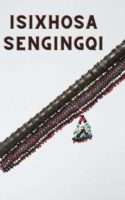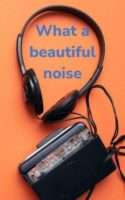Let’s talk about the issue of marking “other” on forms when asked about race in South Africa. This is a legacy of the country’s apartheid system, which enforced racial segregation and discrimination for decades. While many South Africans identify as Black, White, Coloured, or Asian, some do not fit neatly into any of these categories. These individuals often struggle to find a label that accurately represents their identity and experiences and may face unique challenges as the only label they have to identify themselves in a form is “Other”.
I believe that exploring the thinking of people who do not fit assigned racial categories is an important step towards promoting inclusivity and understanding in our society. Many individuals who don’t easily fit into preset racial classifications frequently have particular difficulties relating to their identity and experiences, which can influence their attitudes and beliefs. By taking the time to hear and comprehend the thoughts and feelings of people who do not fit into established racial categories, we can learn a lot about the intricacies of identity and the effects of social classification.
It’s important to acknowledge that South Africa has a complex history, with a diverse population that includes the Khoisan, Bantu people, colonisers, and Dutch East Indian Company slaves, which makes the task of accurately categorizing race more challenging. We talked to Savannah Steyn and Kuselwa Ntantiso, who shared their experiences on marking “Other” in a form.
“Having to state my race is daunting because I find myself considering what is politically correct and what others have perceived me as. At times I’m very confident in stating that I’m coloured but then I do find myself pausing every once in a while. There was a time in my life where I would fight with people about the fact that I’m black, as in Steve Biko black. And then I have family who have argued how I’m actually khoi and that the group coloured has stripped away all of my family’s challenges in the past. So when I put down ‘other’ it’s because I’m worried about losing my anonymity but also not firm in my declaration of identity. I think there’s too much in our history to only have three or four check boxes for one’s race. And while the ‘other’ box allows me some freedom and recognition… It does leave me feeling isolated,” says Savannah.
“I would say excluded because ‘other’ seems like another blanket or umbrella term. It groups a lot of unknown variables in a sense and makes me feel like a number or statistic rather than a person. It does have me doubting myself at times as well because I suddenly feel like I don’t know who my people are… Where I may fit in,” Savannah adds.
“I feel excluded when I have to mark other. The people that assign these race categories need to do more research about our history, because I feel giving us the options black, white, coloured and other is not looking or thinking clearly about different cultures,” says Kuselwa.
Both Savannah and Kuselwa have experienced feeling excluded and uncertain about how to identify themselves when the only option is “Other”. Marking “Other” on forms when asked about race is a complex and multifaceted issue. While some may argue that racial identification is essential for social and political purposes, others believe that race is a fluid and subjective concept that cannot be easily defined. The important thing is to recognise and respect the diversity of human experiences and to create spaces that welcome and celebrate all individuals, regardless of their race or ethnicity. So, let’s continue to have open and honest conversations about this issue and work towards creating a more inclusive and understanding society.
What do you think can be done to create more inclusive spaces for people who don’t fit neatly into established racial categories, and how can we promote understanding and respect for the diversity of human experiences?






